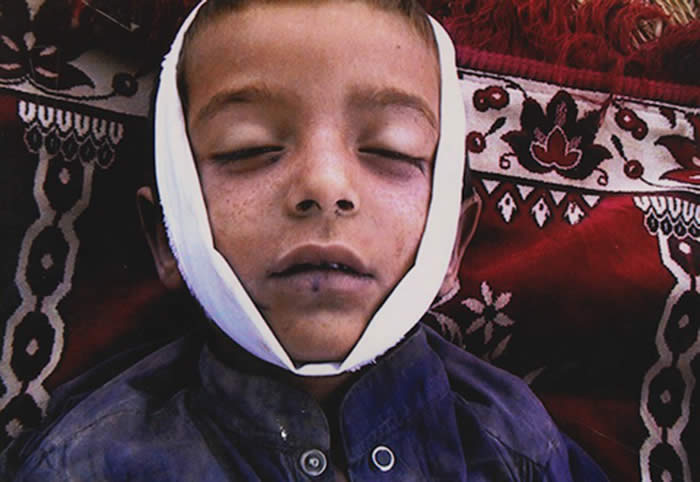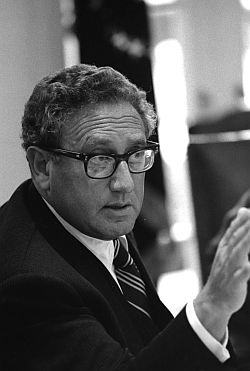What a world we’re in. Thanks to smartphones, iPads, and the like, everyone is now a photographer, but it turns out that, in the public landscape, there’s ever less to photograph. So here are a few tips for living more comfortably in a photographically redacted version of our post-9/11 world.
Even if you’re a professional photographer, don’t try to take a picture of Korita Kent’s “Rainbow Swash.” It’s “one of the largest copyrighted pieces of art in the world,” painted atop a 140-foot-high liquefied natural gas tower in Dorchester, Massachusetts. James Prigoff, a former senior vice president of the Sara Lee Corporation and a known photographer, tried to do so and was confronted by two security guards who stopped him. Later, though he left no information about himself and was in a rented car, he was tracked down by the FBI. Evidently he had been dumped into the government’s Suspicious Activity Reporting program run by the Bureau and the Department of Homeland Security. (And when you end up on a list like that, we know that it’s always a living hell to get off it again.) He sums up his situation this way: “So, consider this: A professional photographer taking a photo of a well-known Boston landmark is now considered to be engaged in suspicious terrorist activity?”
And while you’re at it, don’t photograph the water tower in Farmer’s Branch, Texas (as professional photographer Allison Smith found out), or planes taxiing to takeoff at the Denver airport (if you have a Middle Eastern look to you), or that dangerous “Welcome to Texas City” sign (as Austin photographer Lance Rosenfield discovered when stopped by BP security guards and only let off after “a stern lecture about terrorists and folks wandering around snapping photos”), or even the police handcuffing someone on the street from your own front lawn (as Rochester, New York, neighborhood activist Emily Good was doing when the police cuffed and arrested her for the criminal misdemeanor of “obstructing governmental administration”).
The ACLU has just launched a suit challenging that Suspicious Activity Reporting database, claiming quite correctly — as Linda Lye, one of their lawyers, puts it — that the “problem with the suspicious-activity reporting program is that it sweeps up innocent Americans who have done nothing more than engage in innocent, everyday activity, like buying laptops or playing video games. It encourages racial and religious profiling, and targets constitutionally protected activity like photography.”
You know the old phrase, “it’s a free world?” Well, don’t overdo it any more, thank you very much. Your safety, your security, and the well-being of an ever-expanding, ever more aggressive national (and local) security state and its various up-arming and up-armoring policing outfits increasingly trump that freedom. And let’s face it, when it comes to your safety not from most of the real dangers of our American lives but from “terrorism,” freedom itself really has been oversold. Remember the famous phrase from the height of the Cold War era, “better dead than red”? It seems to have been updated without the commies. Now, it’s something like: “better surveilled than sorry.” And based on that, all behavior is fast becoming potentially suspicious behavior.
Since 2013, State Department whistleblower Peter Van Buren has been covering our new world of constricting freedoms in what he’s termed “Post-Constitutional America” for TomDispatch. With this look at the government’s newfound “right” to kill an American citizen without due process, he completes a three-part series on the shredding of the Bill of Rights, the previous two parts having focused on the First Amendment and the Fourth Amendment. Tom Engelhardt
Dead is dead
Drone-killing the Fifth Amendment
By Peter Van Buren
You can’t get more serious about protecting the people from their government than the Fifth Amendment to the Constitution, specifically in its most critical clause: “No person shall be… deprived of life, liberty, or property, without due process of law.” In 2011, the White House ordered the drone-killing of American citizen Anwar al-Awlaki without trial. It claimed this was a legal act it is prepared to repeat as necessary. Given the Fifth Amendment, how exactly was this justified? Thanks to a much contested, recently released but significantly redacted — about one-third of the text is missing — Justice Department white paper providing the basis for that extrajudicial killing, we finally know: the president in Post-Constitutional America is now officially judge, jury, and executioner.
Due Process in Constitutional America
Looking back on the violations of justice that characterized British rule in pre-Constitutional America, it is easy to see the Founders’ intent in creating the Fifth Amendment. A government’s ability to inflict harm on its people, whether by taking their lives, imprisoning them, or confiscating their property, was to be checked by due process.
Due process is the only requirement of government that is stated twice in the Constitution, signaling its importance. The Fifth Amendment imposed the due process requirement on the federal government, while the Fourteenth Amendment did the same for the states. Both offer a crucial promise to the people that fair procedures will remain available to challenge government actions. The broader concept of due process goes all the way back to the thirteenth-century Magna Carta.
Due process, as refined over the years by the Supreme Court, came to take two forms in Constitutional America. The first was procedural due process: people threatened by government actions that might potentially take away life, liberty, or possessions would have the right to defend themselves from a power that sought, whether for good reasons or bad, to deprive them of something important. American citizens were guaranteed their proverbial “day in court.”
The second type, substantive due process, was codified in 1938 to protect those rights so fundamental that they are implicit in liberty itself, even when not spelled out explicitly in the Constitution. Had the concept been in place at the time, a ready example would have been slavery. Though not specifically prohibited by the Constitution, it was on its face an affront to democracy. No court process could possibly have made slavery fair. The same held, for instance, for the “right” to an education, to have children, and so forth. Substantive due process is often invoked by supporters of same-sex unions, who assert that there is a fundamental right to marry. The meaning is crystal clear: there is an inherent, moral sense of “due process” applicable to government actions against any citizen and it cannot be done away with legally. Any law that attempts to interfere with such rights is inherently unconstitutional.
Continue reading →




 Obviously, Kissinger’s purpose in making this claim is not to portray President Obama as a war criminal. After all, Obama often acts like one of Kissinger’s most devoted students.
Obviously, Kissinger’s purpose in making this claim is not to portray President Obama as a war criminal. After all, Obama often acts like one of Kissinger’s most devoted students.